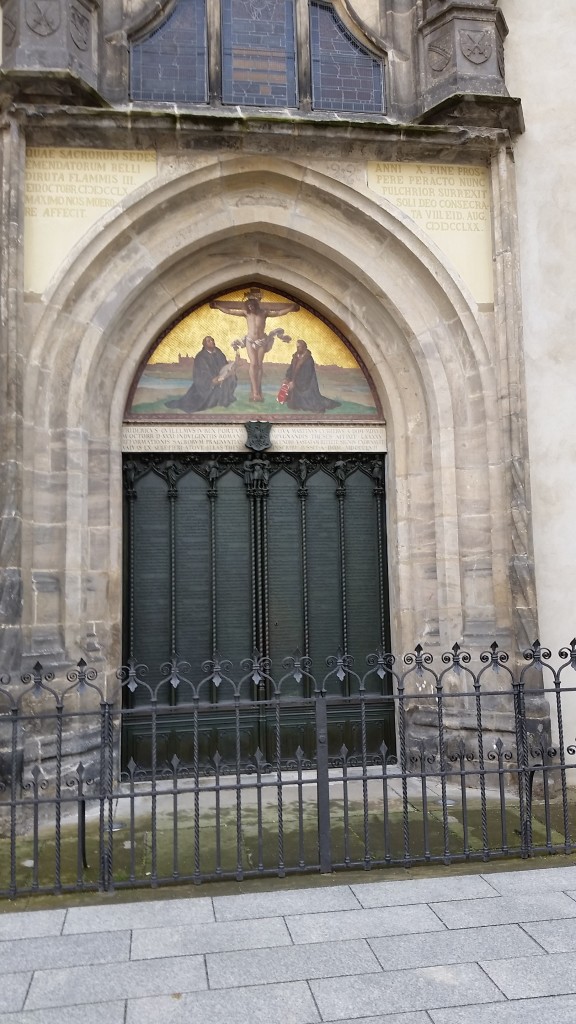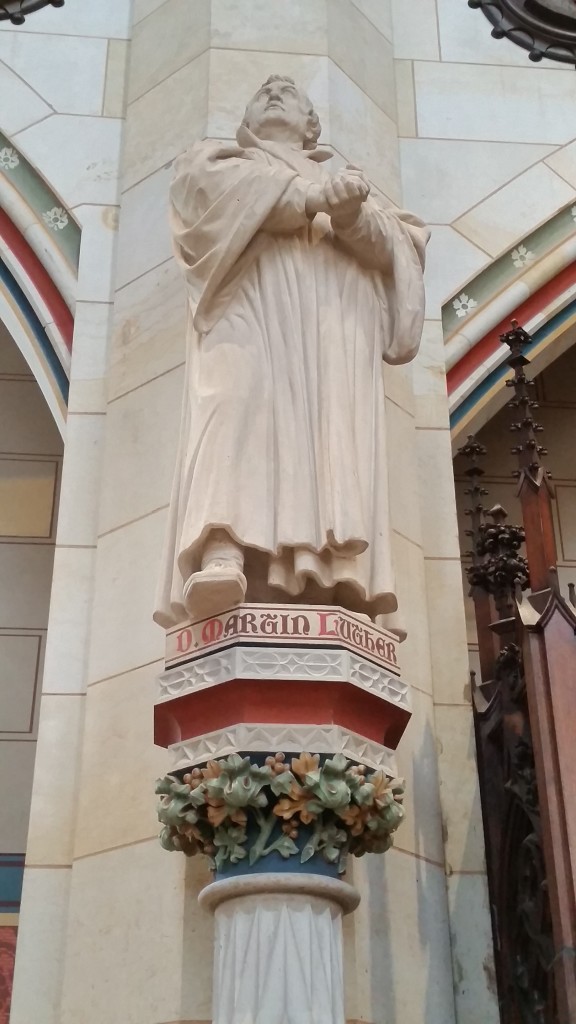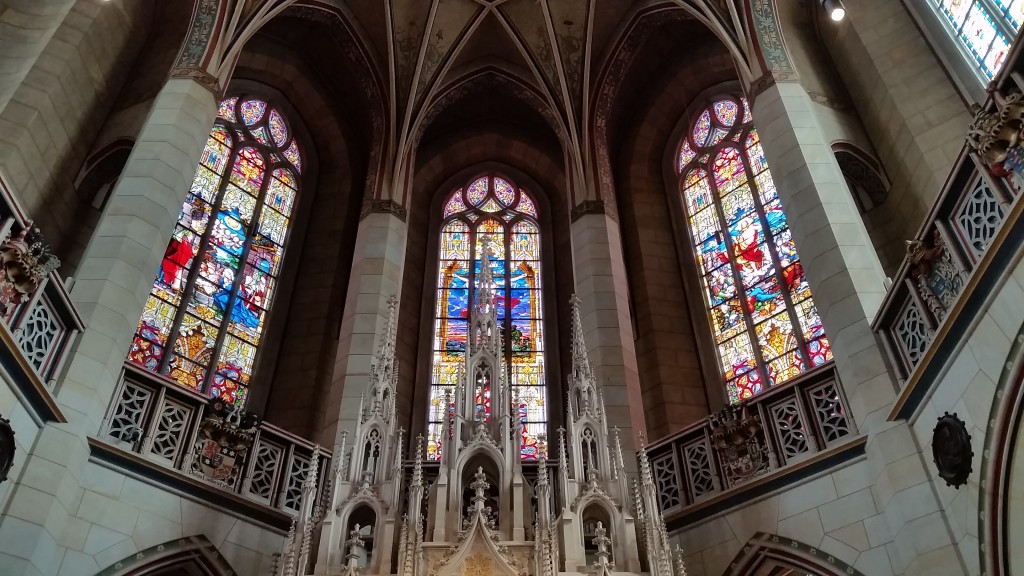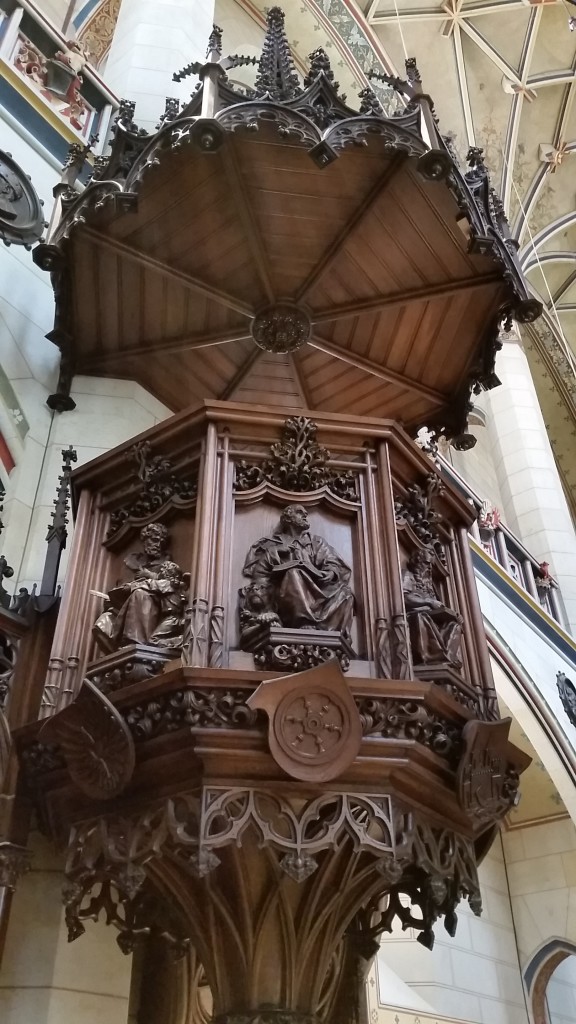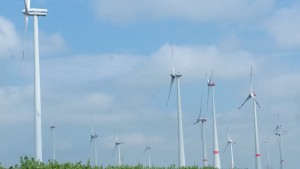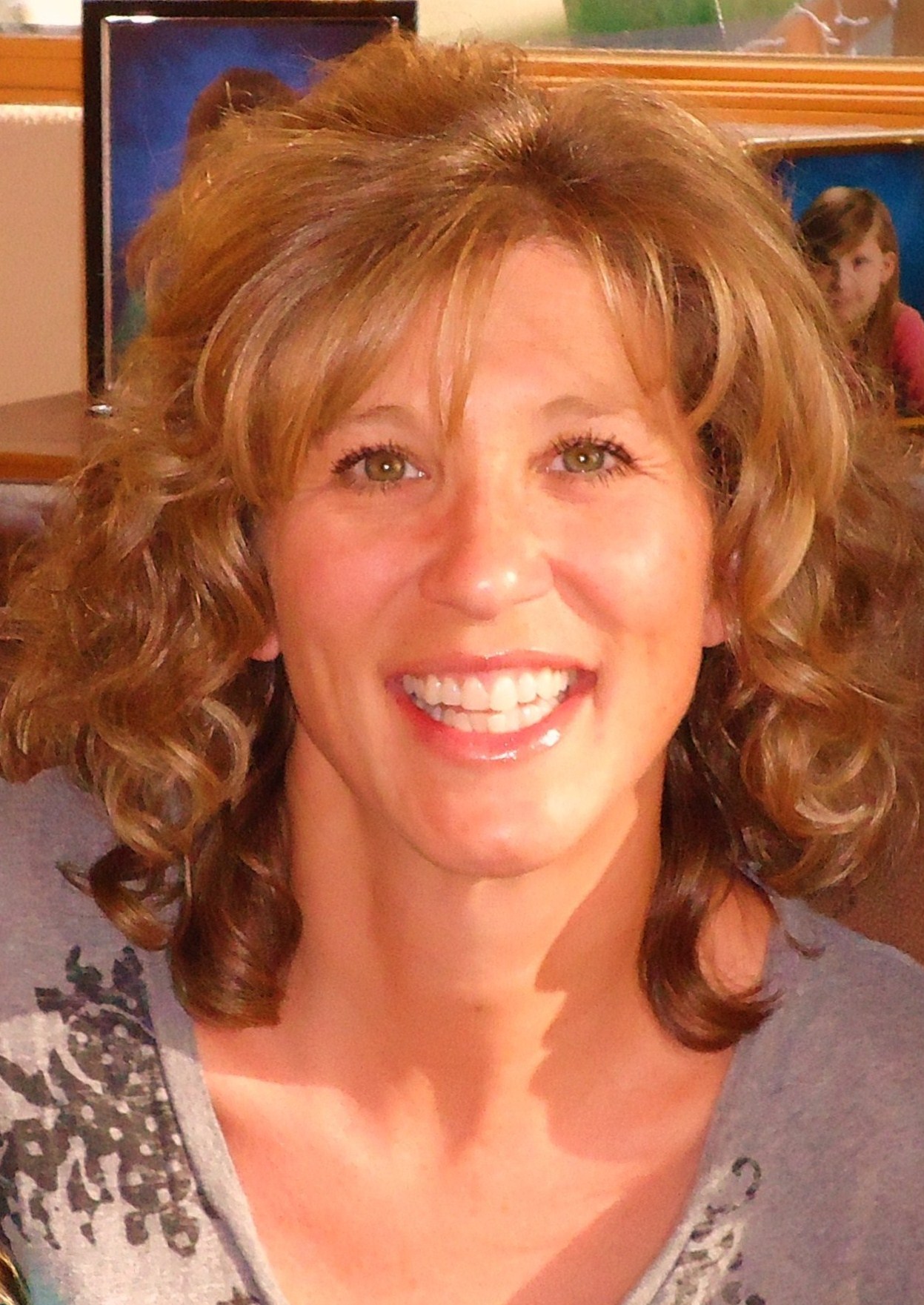After Nuremberg/Nürnberg, we headed to Berlin and our rented condo in the city which, it turned out, was in the former East Berlin. We were so excited to see Berlin…my husband and kids have never been there and the last time I was there it was a divided city, which made it fascinating and soul-crushingly depressing at the same time. The vice grip of the Soviet occupation was no joke, but more on that later.
On the way, we would be crossing through the former DDR (East Germany).

Piece of the actual fence that ran along the inner German border. CC license, photo by Vincent de Groot – http://www.videgro.net.
I was excited to explore the former DDR by car, as I had only seen it from the train as I crossed to Berlin once. There wasn’t much to see: empty landscape, farms, and Geisterbahn (ghost train) stations, thus called because the trains had long since ceased to stop there. And I had peered at the Iron Curtain between West and East Germany outside of Göttingen (where I studied for a semester). From a distance, thanks to warning signs not to get closer, we peered through the Iron Curtain, the wire fence and No Man’s Land that divided the two nations but one people. It was deeply depressing. The westernmost barrier was a fence you could easily see through, but the metal mesh was specially designed to slice your fingers if you tried to climb it. The fence was equipped with trip wires attached to assault weapons; the shoot-to-kill order was strictly enforced. The Soviets insisted it was all to keep the capitalists out, but all the weapons pointed east.
Behind the fence was a sandy strip of No Man’s Land, several yards wide and perpetually grated by patrol trucks driven by armed guards. Add to that watch towers, foot patrol soldiers with attack dogs, and high-power listening devices. The listening devices were trained to the west side of the border, however, which gave us the added advantage of telling the Soviets directly exactly what we thought of their stupid wall. For what it was worth.

An old post from the inner German border, now on display outside the Wall Musuem at Checkpoint Charlie in Berlin.
But on our route for this trip, on the way to Berlin, just about 20 km from the Autobahn, lay the the little town of Wittenberg, where Luther inadvertently started the Reformation. Just so happens, this year is the 500th anniversary of his fateful nailing of the 95 Theses on the door of the Schloßkirche, a bold rebuke of the Roman Catholic theology of 1517. We were excited to see the church ourselves–ok, I practically ran. And my husband got some pictures of me all giddy by the door where it all started. Luther’s Theses are now memorialized in bronze and protected from geeks like me by a tasteful fence.
As I stepped into the cool interior of the church, I was overwhelmed with gratitude. I know how lucky we are to be able to make a trip like this. And to be able to see my old friends–virtually all of them in one go–was a life event for me.
The church was a lot to take in at once. Everyone inside was having a similar experience, staring around silently, heads tilted back, mouths agape, taking slow and quiet steps, occasionally taking a photos, but reverently. There’s something about standing in a very old building, especially one where people have flocked for guidance and stability in many turbulent eras. Of course, not everyone who enters a church embodies the beliefs they pretend to espouse. Humans are complicated, and that tug-of-war is what fascinates and challenges me.
Leaving Wittenberg and heading north, you notice the different look of a town that missed out on the Wirtschaftswunder (economic miracle) of the Reconstruction. The overbearing Soviet presence had receded quickly, but something about the dour, faded buildings reflected that colorless occupation. A history of suspicion and surveillance had left a detectable trace, like a fine grit of factory dust. Still, it was nice to experience open spaces and I became obsessed with photographing the hundreds of wind turbines that soared above the rolling fields, close enough to the road that you could really appreciate their enormity. They are almost impossible to photograph well, but I passed the time trying. No luck, but I appreciate that Germany gets about 15% of their total energy from wind.
Finally, we arrived in Wampen, in a quiet neighborhood on the edge of wide fields that run up to the edge of Baltic Sea. Home of my dear friend Katy, whom I hadn’t seen in some 26 years. Katy is the best pen pal I’ve ever had. Her letters are passionate, detailed, and hilarious, full of all the Sturm und Drang of life fully lived. Reading one is like being wherever she is. In fact, as she showed us around her home, it all looked and felt very familiar.
Next up: Katy’s World

